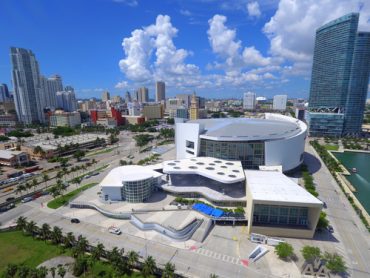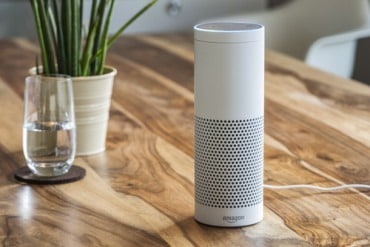
If issues in the adoption process aren’t addressed, the value realized through IIoT will be far short of projections.
We have all read frequently about the explosive arrival of IoT and how it’s changing manufacturing forever. However, it’s time to focus on the actual issues – complexities faced in launching IoT systems in industries. Despite a staggering number of projects failing every year (CISCO says 76%), the ‘IoT is here’ hangover hasn’t escaped many heads.
The manufacturing sector has seen the earliest adoption of IoT as it fast tracks the production while exhausting minimum resources. 2025 could indeed see IIoT valued at USD 110.6 billion. However, if the issues in the adoption process aren’t addressed, the value realized through IIoT will be far short of projections.
See also: IoT Market Remains Fragmented, With Hundreds of Choices
While the issues are numerous, we found the following critical challenges in IIoT adoption that no one talks about.
Complexity in Storing and Processing Big Data
There are three types of problems with data storage here, firstly, the volume is unimaginably huge and increasing; secondly, regardless of the volume, the data has to be processed extremely fast without missing out on any data sets in real-time. And with more sensors and devices adding up the network, the complexity increases.
Furthermore, the new IoT integration must perform in sync with the ERP systems processing the Metadata. As the entire production line is at stake, the connected landscape should accurately foresee potential disruptions due to damages anywhere in the line. To achieve this, organizations must not go out of focus from their core objective – faster response times without missing out on any crucial points.
What to Do?
- Implement a hybrid storage model of long-term storage (Data Centres or Cloud) and short-term storage (edge-computing).
- Using high-quality hardware and software tools that can accommodate extensive processing
- Advanced analytics tools to collect, process, and analyze data across the system landscape.
Taking Sourcing for Granted
Sourcing is a huge bottleneck in launching successful IoT initiatives. Network infrastructure, smart industrial equipment, software analytics tools, and hundreds of electronic components is an unforeseen issue that could dip your investment without notice.
Add to it, professional resources including engineers, quotation experts, solution architects, and business consultants, etc. are either not skilled with IoT or beyond the budget of most organizations.
All these complexities contrive towards slowing the development of IoT products even though you have a brilliant idea on paper.
Since IoT has a critical task in simplifying industrial processing such as remote monitoring, predictive maintenance, and asset tracking, there is no choice other than deploying best-in-class resources.
What to Do?
Look out for solutions that provide IoT expertise across the stack – product viability analysis, cost estimation, on-demand product components, development expertise, and professional resources.
Consider Ioterra, a one-stop marketplace for businesses to handpick IoT product development resources as per their requirement. They fit perfectly because of their wide range of industrial IoT applications, ready-to-deploy products and professional firms for every level. Ioterra’s founding team is led by renowned IoT experts, Daniel Price, Abhinav Dubey, and Danny deLaveaga who realized the issues of resource crunch during their previous IoT product development startup called Breadware which was recently acquired.
Blending their prior expertise in the business, the leadership aims at filling the resource gaps and empowering businesses to quickly find highly reliable IoT resources for their initiatives.
Solutions like these can effectively help the community in launching their projects in a fast and productive manner.
Erroneous Budget Planning
Although IoT reduces maintenance costs, adoption is an expensive affair. That means, the true benefits of efficiency across cost, time, and accuracy will be realized in the mid to long-term. The challenge with costing begins with unclear return on investment ROI expectations as the solutions are still new and mostly unproven. Moreover, lack of expert consulting makes it riskier. As per Microsoft’s popular 2019 IoT Signals report, 29% of organizations couldn’t develop IoT products for their brand due to a lack of resources.
Adding to the intricacy are the diverse stakeholders across departments in an industrial unit. For example, Procurement, Production & Planning, Sales & Distribution, Customer Management (CRM verticals), etc. all will be affected at some level with IoT joining the production and analysis teams.
Therefore, most organizations struggle with creating a compelling business case for a dynamic industrial ecosystem.
What to Do?
Start with Cloud. Many reputed companies provide industrial-grade data management. It lessens infrastructure and security costs.
Include operational costing from the beginning such as network communication (RFID, Wi-Fi, etc.) storage fee (cloud, data center, etc.), and infrastructure servicing.
Choose the right partners – for system development and equipment sourcing and seek their advice on budget planning. They should be able to advise you on how to prioritize your budget allocation around different aspects of your IoT implementation.
Getting Things Done for the Internet of Things
In all likelihood, the three challenges discussed above are interdependent. An optimal way to address them all efficiently would be to plan in advance and seek expert consulting from the start. Unless the foundation of the system comprising the network of products is strong, the output will suffer.






























